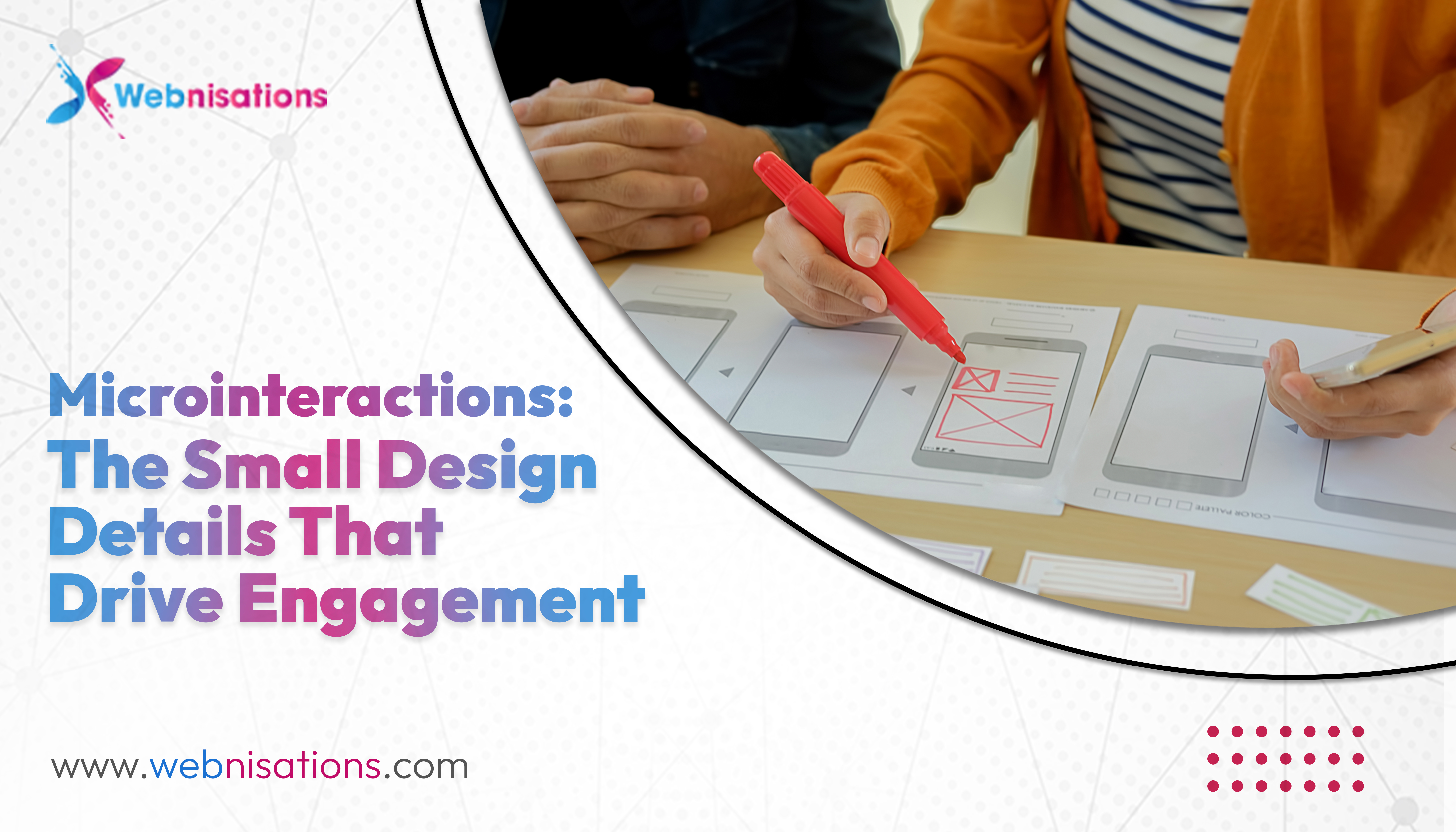-
Services
- Custom Web Design & Development Get your ideas developed into your own style with a customized website.
- WordPress Development A unique optimized WordPress website customized to your requirements.
- E-commerce Web Development Get your business online with a fully customized e-commerce website for your brand.
- Web Applications & Portals Get your own unique web applications and portals for your brand.
- SEO Improve the quality of the reach on your web pages with detailed search engine optimization of your brand.
- Domains and Hosting Mobile Application Development Logo Design Branding Video Animation Content Writing Website Management Digital Marketing
- Packages
- Client Reviews
- Portfolio
- Blog
- Contact Us
- Select your business
Microinteractions: The Small Design Details That Drive Engagement

Introduction
In digital design, it's usually the little things that have the biggest impact. While major design items such as layout, images, and navigation are what receive the most attention, it is the minor details, known as UX microinteractions, that determine how users experience being on your site. These small design details may seem minor, but they have a huge impact on driving better website engagement and crafting an unforgettable user experience.
What Are Microinteractions?
Microinteractions refer to those small, fleeting reactions that happen when people use a digital product. They're the brief flashes of feedback that direct, comfort, or surprise people as they move through a website or application. Consider the "like" animation on social networks, a spinner animation for loading, a color-changing button when clicked, or a smooth scroll transition. These are all examples of microinteractions.
They typically have four major uses:
- Giving Feedback: They make users know that their action has been detected. As an example, a button that turns green when it is clicked informs about the working action.
- Enhancing Navigation: Imperceptible animations and transitions guide users smoothly from one section of a site to another.
- Provoking Interaction: The playful movements or the sound effects encourage the user to return to it.
- Communicating System Status: Loading bars or a progress animation tell the user that something is going on in the background.
These little moments of design can be small but are pivotal to how users will feel about and trust your website.
Why Microinteractions Matter for Website Engagement
A well-designed website isn’t just about looking good; it’s about feeling right. UX microinteractions give your website personality, rhythm, and flow. When executed correctly, they help bridge the emotional gap between a user and a digital interface.
Here’s how microinteractions enhance website engagement:
- They make interactions feel human: A pop of a hover effect or a button animation tastes like a warm welcome, a slight "thank you" for the user's click. This responsiveness creates comfort and confidence.
- They keep users informed: Picture filling out a form and having a green checkmark pop up when each field is filled in correctly. Such immediate visual feedback eliminates confusion and keeps the users going.
- They decrease cognitive load: Tiny animations can point attention in the direction of what matters, allowing users to digest information quickly. Rather than bogging them down with options, microinteractions produce organic suggestions for what to do next.
- They create emotional resonance: When users get pleasurable experiences, such as a seamless transition or an entertaining animation, it evokes positive emotions that they will relate to your brand. And over time, the accumulation of these experiences brings users back for more and keeps them on the site longer.
Best Practices for Designing Successful Microinteractions
Great microinteractions need to be designed. They ought to improve the experience, but not to distract it. Here are a few best practices to keep in mind:
- Keep them purposeful: Each animation or motion should have a definite purpose, such as directing a user, validating an action, or indicating a transition. Do not add any extraneous effects that slow performance.
- Make them quick and subtle: Microinteractions must be instantaneous. If they are too slow, they irritate instead of enchant.
- Use them consistently: Users learn how your site works through repetition. Establishing patterns keeps people trusting and makes it predictable in a positive manner.
- Add personality thoughtfully: Humor or playfulness can be wonderful, but only if it's appropriate for your brand. A high-tech firm may use smooth transitions, while a playful brand may introduce a bounce effect to buttons.
- Test and refine: Microinteractions, like any other design element, are supposed to be tested. Ask users to provide feedback on whether they are improving or damaging the interaction.
Conclusion
Ultimately, UX microinteractions are more than just cosmetic flourishes; they're powerful strategic levers for catalyzing website engagement and creating emotional bonds with your users. They take passive browsing and turn it into active engagement, so users feel seen, heard, and appreciated. At Webinisations, we think that the magic of a website is in the details. With careful design and accurate microinteractions, we build experiences that don't just look beautiful but also feel naturally engaging. Because in today's digital era, it's the smallest moments that make the biggest difference.



